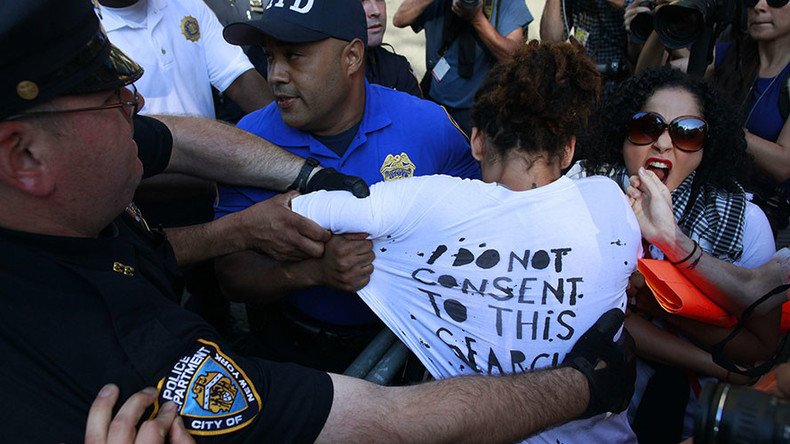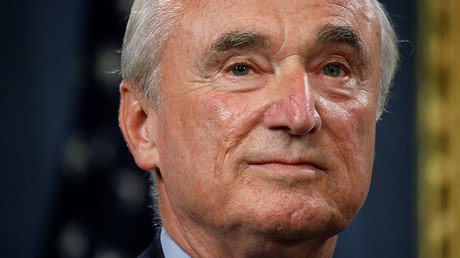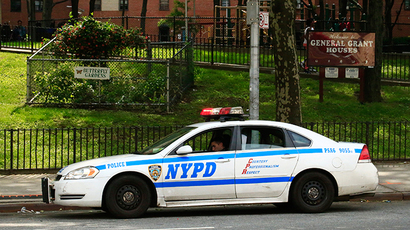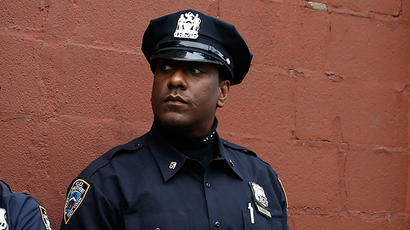Stop-and-frisk ‘an important tool when used right’, FBI director tells Congress

Days after Republican presidential nominee praised the controversial ‒ and unconstitutional ‒ police tactic of stop-and-frisk, the nation’s top cop also came out in favor of it. On Capitol Hill, FBI Director James Comey called it “an important tool.”
Testifying before the House Judiciary Committee on Wednesday for a hearing on FBI oversight, Comey told lawmakers that stop-and-frisk is “an important tool when used right. What makes the difference between right and wrong is what’s the nature of the conversation with the person you stopped.”
Police officers "who search citizens without stating the reason should explain after the encounter why they decided to do so," he added.
The answer came as part of a response to a question from Representative David Cicilline (D-Rhode Island), who asked, “Do you believe this stop-and-frisk is an effective tactic to address crime in our nation’s cities? What would a federal implementation look like that Mr. Trump has called for? And how can Congress minimize racial profiling and discriminatory, ineffective techniques like stop-and-frisk, and instead promote activities that build trust and confidence between the police and communities?”
Comey said he didn’t know what a federal stop-and-frisk program would look like “because we’re not in the policing business; we’re investigative agencies at the federal level.” In the federal system, however, stop-and-frisk is referred to as the “Terry stop,” he explained, which is “the stop of an individual based on reasonable suspicion that they’re engaged in criminal activity [and] is a very important law enforcement tool.”
“To my mind, its effectiveness depends upon the conversation after the stop,” Comey continued. “When it’s done well, someone is stopped, then they are told, ‘I stopped you because we have a report of a guy with a gray sweatshirt who matches you, that’s why I stopped you, sir, I’m sorry’ or ‘I stopped you because I saw you do this behavior’. Because the danger is what’s an effective law enforcement technique can become a source of estrangement for a community” if it’s not deployed correctly.
At the height of the New York Police Department’s use of stop-and-frisk in 2011, police employed the tactic on more than 685,000 people ‒ of whom 53 percent were black, 34 percent Latino and 9 percent white, and more than half of whom were 14-24 years old, Cicilline noted. Of the people who were stopped, 88 percent were neither arrested nor received a citation. By two years later, the number of stops had plunged dramatically.
In November 2013, a federal appeals court declined to overrule a lower court decision that the NYPD’s stop-and-frisk policy was unconstitutional under the Fourth and Fourteenth Amendments. In June 2016, however, the US Supreme Court ruled 5-3 that if police detain anyone without cause and then find an outstanding warrant, the stop and search are legal. If something incriminating is found on that person, the search is admissible in court.
At the same time that the Second Circuit banned stop-and-frisk, New York State Attorney General Eric Schneiderman issued a report that analyzed some 2.4 million stop-and-frisk pre-crime acts performed by the NYPD between 2009 and 2012. It found that only 3 percent of those stopped were found guilty or convicted. Among the 150,000 arrests made under the program only 51 percent actually led to convictions or guilty pleas, and only 24 percent led to incarceration. An analysis by the New York Civil Liberties Union in August 2014 found that stop-and-frisk was not effective in reducing shootings and murders, and that the “clear lesson” was that the program “does not increase public safety.”
Trump has repeatedly praised the tactic, including during the first presidential debate on Monday night.
Donald Trump talks with moderator Lester Holt about New York City's stop-and-frisk policy. WATCH LIVE: https://t.co/XojhKfUMozpic.twitter.com/NqHROWfanF
— Spectrum News SA (@SpecNewsSA) September 27, 2016
“Now whether or not in a place like Chicago you do stop and frisk, which worked very well... worked very well in New York,” Trump mused. “It brought the crime rate way down, but you take the gun away from criminals that shouldn’t be having it.”
When moderator Lester Holt followed up by noting that the NYPD’s stop-and-frisk program was ruled unconstitutional “because it largely singled out black and Hispanic young men,” Trump was not swayed.
“No, you’re wrong,” Trump shot back. “It went before a judge, who was a very against police judge. It was taken away from her, and our mayor, our new mayor, refused to go forward with the case. They would’ve won on appeal. If you look at it, there are many places throughout the country where it is allowed.”
Prominent 'copwatcher' accuses #NYPD of targeted, unconstitutional arrests https://t.co/C2quldItospic.twitter.com/YgCRbB1bca
— RT America (@RT_America) August 17, 2016
Comey’s boss, Attorney General Loretta Lynch, is generally opposed to the police tactic.
"In New York... that practice was implemented in a way that was not helpful to community trust and to, frankly, public safety and enhancing the relationship between law enforcement and community members," she told Politico during an unrelated press conference last Thursday.
"The issue with stop-and-frisk in the New York area was the widespread indiscriminate use of that practice, particularly when it was not generating success from a law enforcement perspective, in either leads or tips or firearms, and the resulting lack of trust that it generated," Lynch added.
READ MORE: NYPD cops still conducting unjustified stop and frisk – report
She later said that it could be a useful technique under certain circumstances, but that it has to be done in a way“that is constitutional, safe and effective and promotes trust.”
Lynch was chief federal prosecutor in Brooklyn before she was nominated as attorney general.















